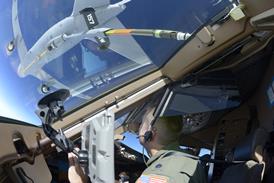Jet Aviation has launched what is effectively a franchised aircraft charter service in Europe, allowing operators to provide flights under a standardised Skylliance brand. For an entrance fee and monthly payments, members will benefit from Europe-wide marketing and a corporate identity, including crew uniforms and discounted fees at Jet Aviation’s fixed-base operations.
The first company to join Skylliance is Executive Airlines of Barcelona, which will offer four aircraft – a Bombardier Learjet 45, a Cessna Citation CJ1 and Bravo and a Dassault Falcon 900EX – as part of the programme. Jet Aviation says it has memoranda of understanding with several would-be members and will formally launch the service within a few weeks with a fleet of 20-25 aircraft from five operators. By the end of 2009, it envisages that this will have grown to 50 aircraft.
Jet Aviation hopes to roll the scheme out in North America “very soon”. Martin Bernegger, general manager of the company’s charter division, says: “We are likely to see it adopted, but with a few exceptions.”
International charter broker Air Partner, meanwhile, has established a dedicated block charter division to develop its Jet Membership card programme, launched 18 months ago. The scheme will be rebranded in the next quarter under the banner JetCard and pitched against NetJets Europe’s fractional and block charter card programmes. The revised offering will give customers a full refund on flight hours bought at any time, says Air Partner.
Chief executive David Savile says JetCard rates will be slightly lower than equivalent NetJets prices and will guarantee aircraft availability even during peak travel periods. JetCard offers blocks of 25h, 50h and 75h in a variety of aircraft, including the Cessna Citation CJ1, Bravo and Excel, provided by European charter operators. The cost of 25h in a light jet is €112,500 ($138,800), rising to €159,000 for a mid-size jet and €254,000 for a large-cabin aircraft.
Savile argues that, while fractional ownership has opened up the business aircraft market in Europe by lowering the barrier to entry, it has failed to win over significant numbers of corporate travellers and has therefore turned to high net-worth individuals who use their aircraft largely for leisure travel. “However, while the fractionals have grown that market they have not done so profitably,” he says.
Source: Flight International























